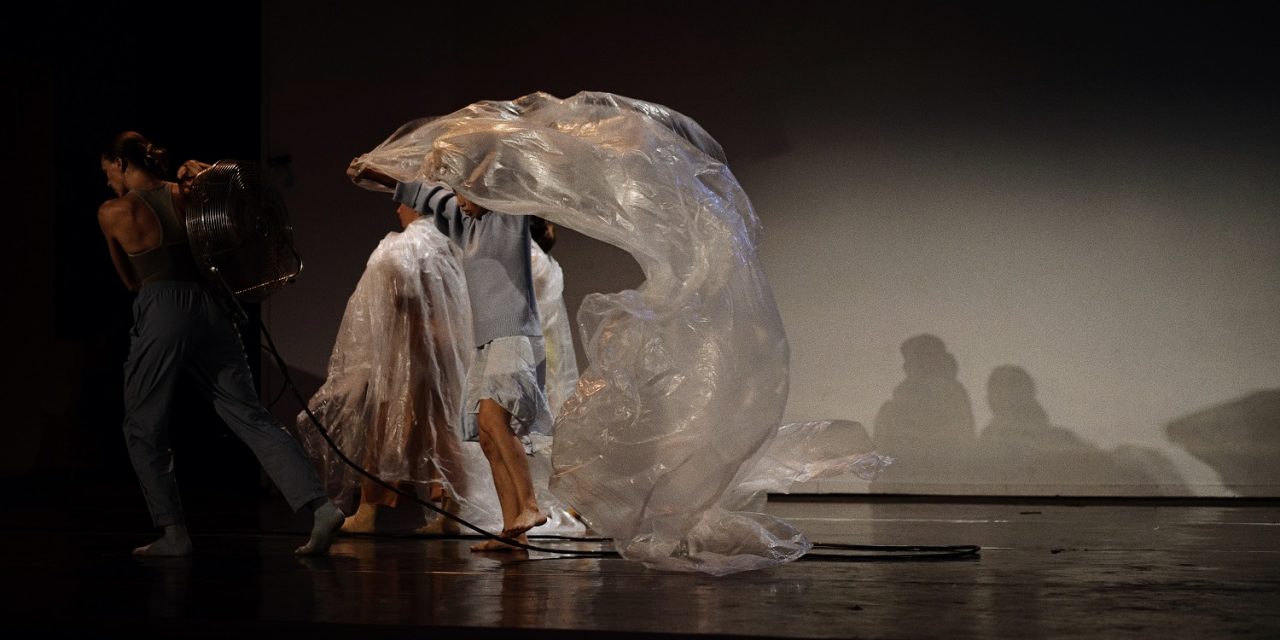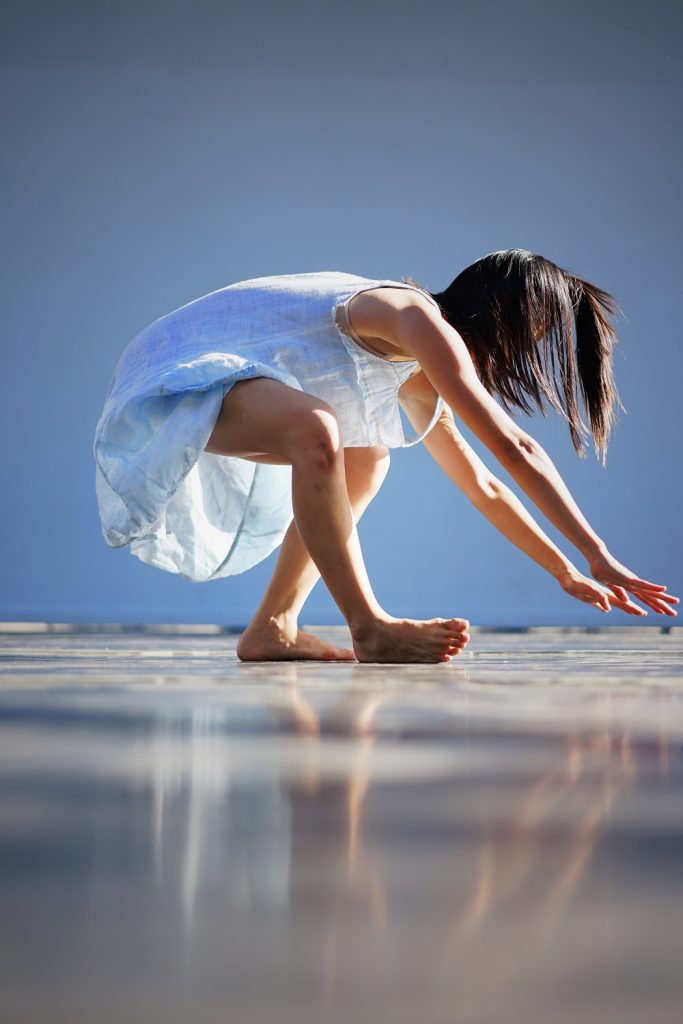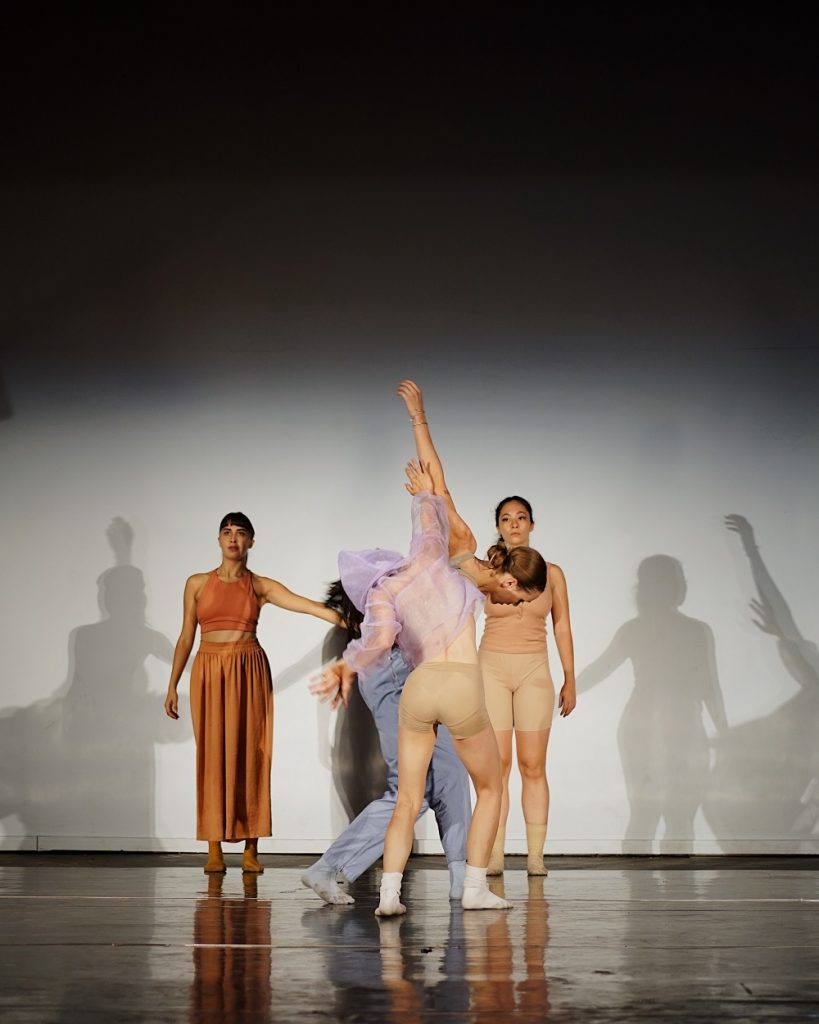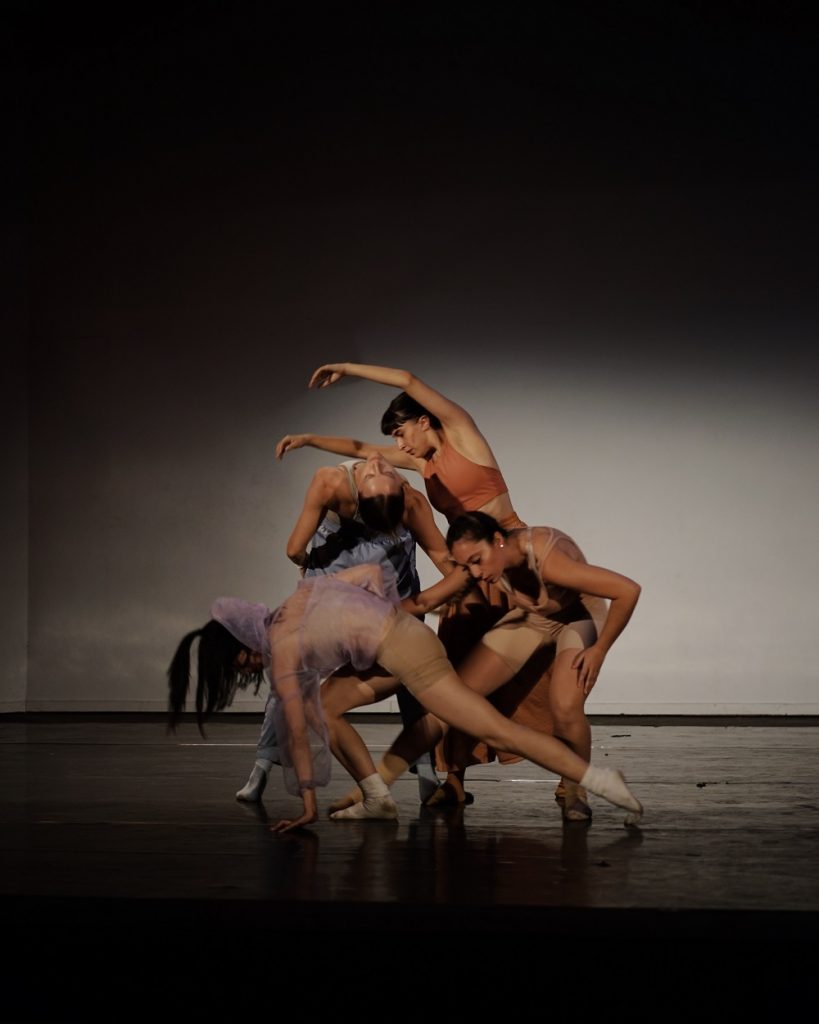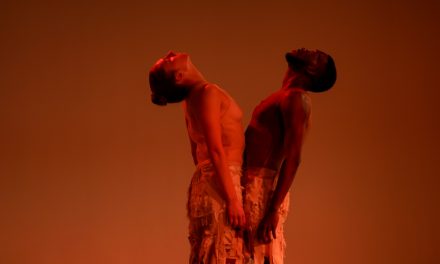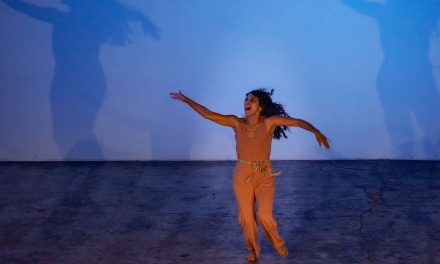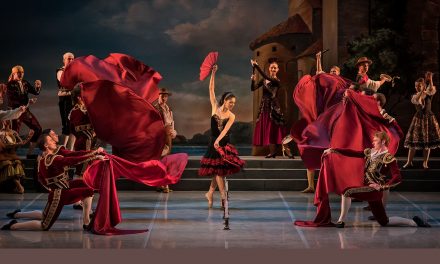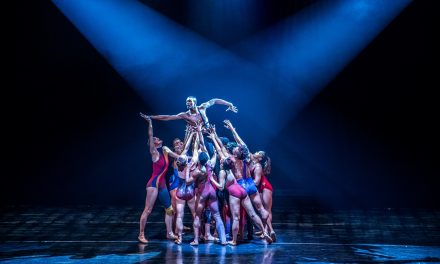My first-ever trip to the Muckenthaler Cultural Center this Thursday was for Lara Wilson’s “How To Draw an Outline.” The venue itself is sweet and familiar, an endearing amphitheater on a mission to bring more dance to Fullerton. In front of every other bench seat stands a table, for picnic purposes, and just around the corner is the museum itself. Wilson’s company, The Assembly Dance, has been the Muckenthaler’s resident dance company for the last year, and I couldn’t help but think what a dreamy outdoor workplace the Muck must have been for Wilson and her four dancers.
Haihua Chiang, MarieElena Martingano, Ally Pawlowski and Taylor Unwin took the stage clad in what the program called “costumes and colors” by Erica Sabatini—blue, orange, and yellow pastels in several pieces gave the piece’s opening tone an airy quality. Mesh half-sleeve jackets in white and purple pastels mimicked the light plastic sheet that the dancers would carry through the piece—it almost felt like the beginnings of an impressionist painting. And here, it was also drawing the beginnings of a life, birth through afterdeath.
“How To Draw an Outline” followed a lifetime’s stages as related to boundaries, a subject Wilson became obsessed with after a #MeToo incident. Candice Thompson, editorial director at DIYdancer (where Wilson is creative director), penned a note on boundaries to serve as program note, where she wrote that “Lara has a keen sensitivity to the energies of those around her. While this is an exhausting superpower to possess, it nonetheless makes her a superwoman.”
The way the dancers moved through the lifetime progression made this extremely evident: each moved at her own frequency, even when in unison. Wilson had initiated movement that would speak well to each energy. Though the phrases were fairly simple, each movement seemed to me a quiet step to reclaiming their space, their bodies, their boundaries; the company has been in what Wilson calls “boundary practice” during their last year of residency. For me, the piece as a whole became less about the dance and more about the peace of sitting in one’s body. The dancers embodied a sort of reverence on the stage, comfortable in motion and in stillness, and deliberate in breath. Even in awkward transition—which Wilson loves to adapt—these women took their time, drew their own lines. Their resting point seemed to me a sort of oscillating stillness, from which they supported each other through the evening-length work.
Pawlowski took the stage in “Physically Impossible,” the first solo section of the evening, in which she mouthed the accompanying score—virtuoso Lubomyr Melnyk’s declaration of his own skill in playing continuous music on the piano, on podcast Platinum Ranch—and executed choreography in perfect unsynchronization. The way she took on Melnyk’s frankness in her facial expressions and maintained her style in the dance movements fit strangely and confidently together. Next came phases of Balance, then Disaster, then Relief.
Chiang caught my eye in Disaster and I begged silently for more commitment to the role; she wasn’t quite settled into her space yet. But in Relief, her solo had me glued to the stage. She moved with a regal martial artist’s quality, but her body allowed her so much more range and quirk, a fascinating combination. Martingano demonstrated a gorgeously supple lower spine that wanted her to reach a bit longer in each movement, but overall proved communicative and detailed.
But I found myself always referring back to Unwin for a stable exhale. Her countenance was so calm that it reached into the audience to hug picnickers, to wrap them in warmth. She was gentle and even stoic until Disaster struck, at which point her despair was so strong that she almost didn’t need to make physical signs of it: it filled the amphitheater itself. Her closing solo in Afterdeath brought pain and resolve simultaneously.
Wilson’s person (though I’ve only spoken with her a few times) truly came through this work, bestowing her soft and articulate strength upon the Muckenthaler audience in a way that seemed to scream through a whisper, “these boundaries will go where I want them, please.” The score, incredibly well-edited and designed by DIYdancer co-founder and managing editor Stephanie Wolf, pulled every bit together into seamless composition. Not an easy task, either: bringing John Cage and Lubomyr Melnyk into poetry and computer memory updates and the incomparable canvas that is Silver Mt. Zion could not have been a piece of cake. And Sabatini’s costume pieces were recycled, passed among dancers throughout, evoking a cyclical life and a camaraderie between women that I found so reassuring.
There’s no doubt that Wilson knows how to pull the most out of her collaborations and honor her collaborators—I think her literacy in many forms works to her advantage here and in her other engagements. “How To Draw an Outline” brought together a capable team and inspired my own boundary practice, opening Wilson’s process to the public and leaving room for future iterations as The Assembly closes out their residency at the Muckenthaler.
Celine Kiner also contributes to DIYdancer, where Wilson is the creative director.
To visit The Assembly Dance website, click here.
Featured image: The Assembly Dance – Photo by Michael Townsend

